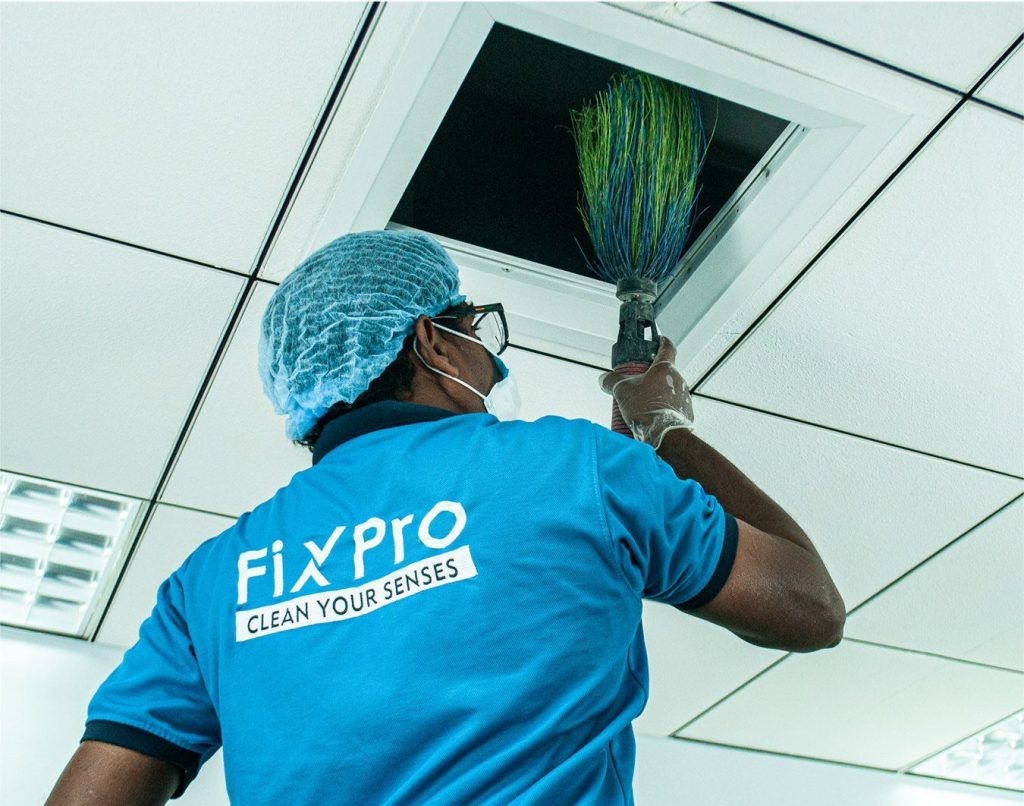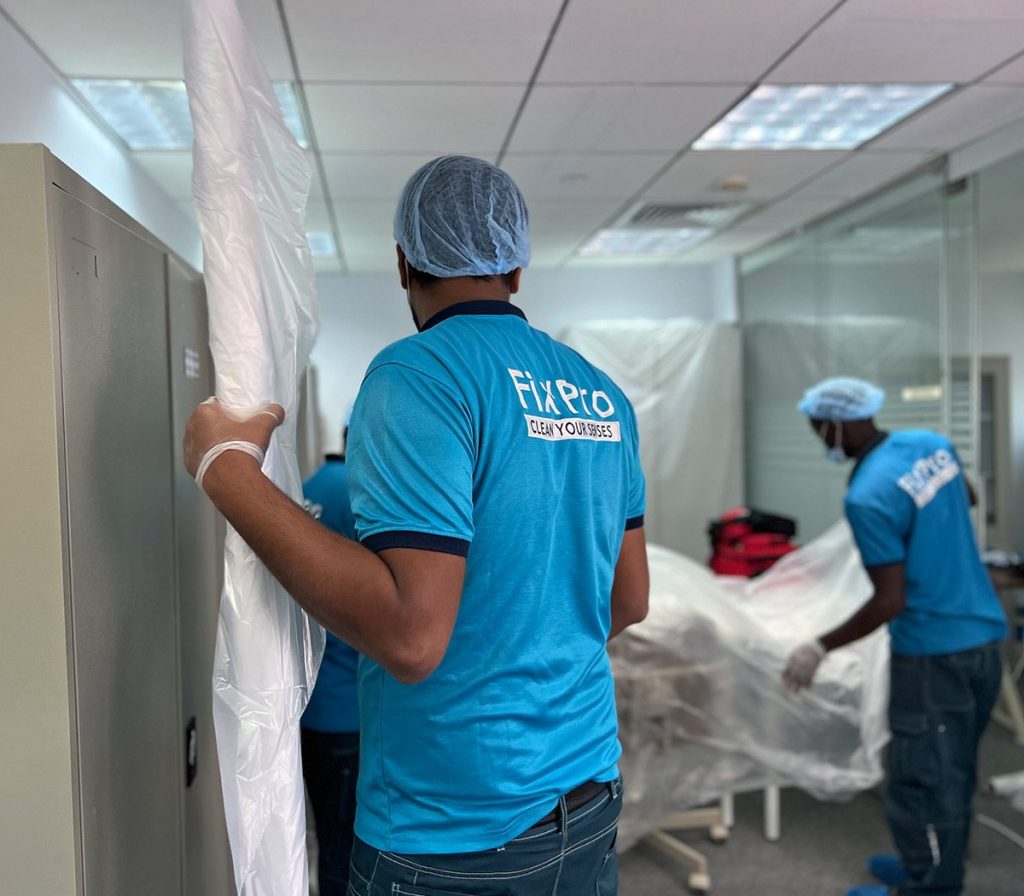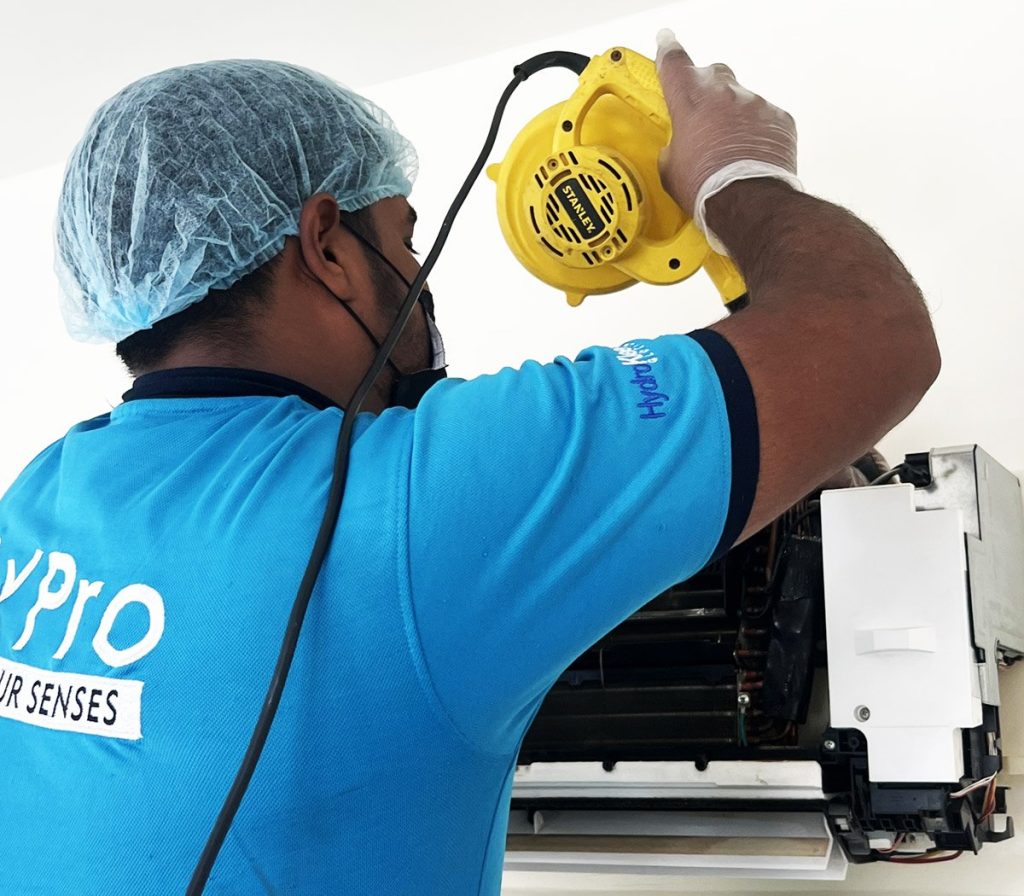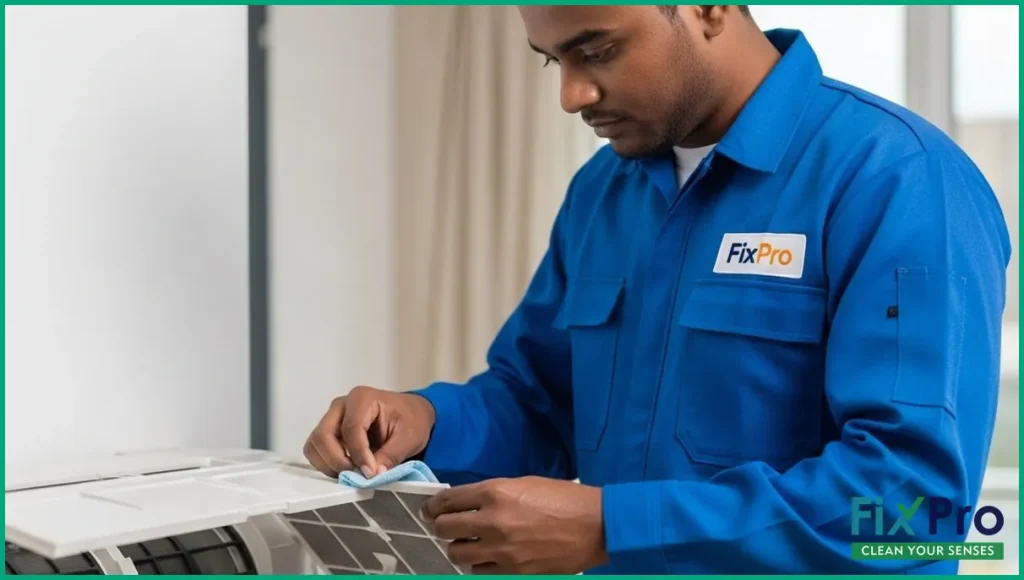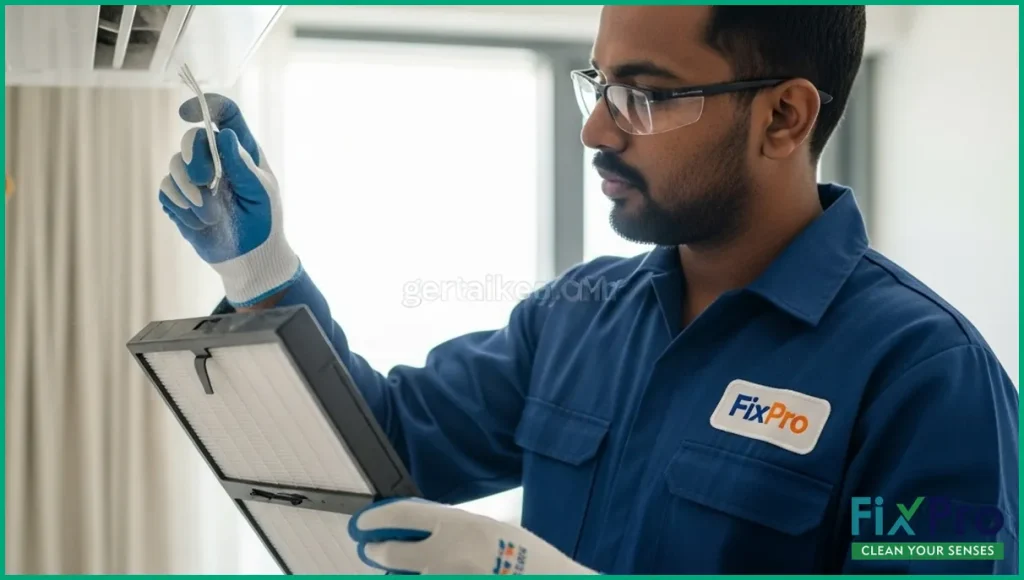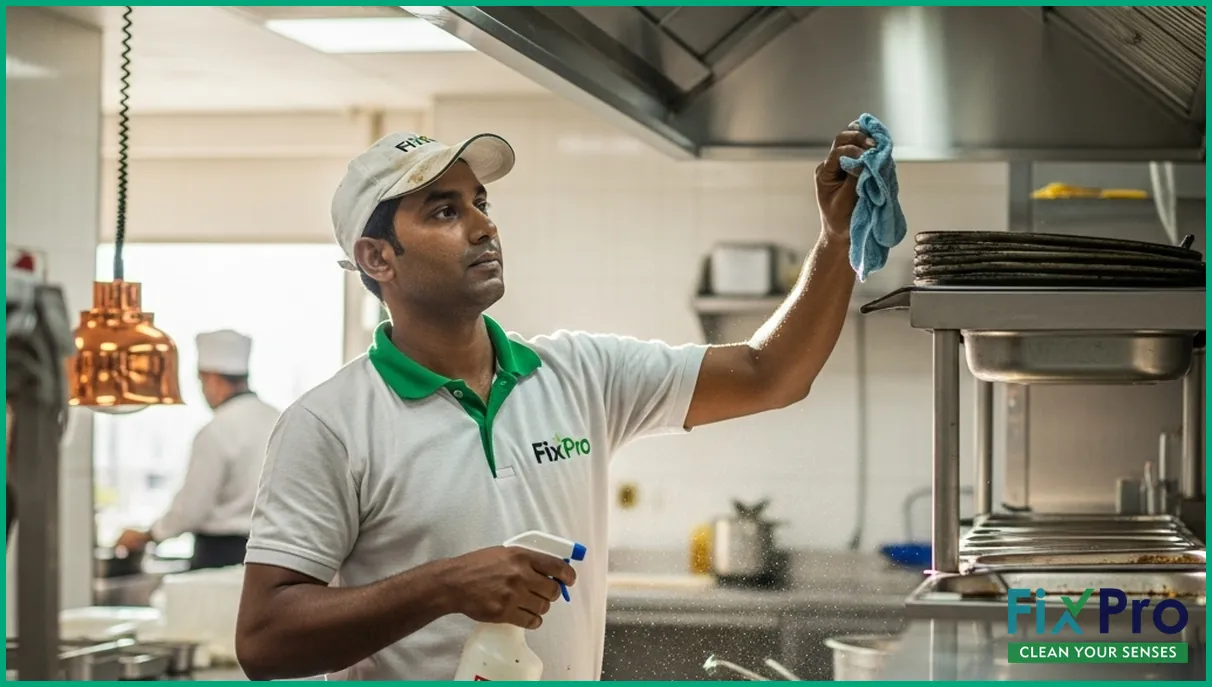
Year-end kitchen exhaust cleaning is crucial for UAE homes and businesses to reduce fire risks, improve air quality, and keep equipment running efficiently. Here’s a practical, step-by-step checklist to help you finish the year with a safer, cleaner kitchen environment.
Why Kitchen Exhaust Cleaning Is Critical in the UAE
Kitchen exhaust systems in the UAE work hard year-round, especially with high temperatures and heavy cooking common in both homes and commercial kitchens. Grease, dust, and debris build up faster in these conditions, making thorough year-end cleaning essential for fire safety and air quality. Neglecting this task can result in unpleasant odours, reduced ventilation, and even compliance issues for businesses.
- Reduces fire hazards by removing grease buildup
- Improves kitchen ventilation and indoor air quality
- Extends the life of exhaust fans and ductwork
- Helps meet hygiene standards for businesses
- Prevents pest infestations by eliminating grease and food residue
- Reduces energy costs by keeping systems running efficiently
For example, a restaurant in Abu Dhabi noticed a significant drop in air quality and an increase in utility bills due to neglected exhaust maintenance. After a thorough cleaning, both air freshness and energy efficiency improved noticeably.
Complete Year-End Kitchen Exhaust Cleaning Checklist
Follow this step-by-step checklist to ensure your kitchen exhaust system is clean, safe, and ready for the new year. While some steps can be handled in-house, others may require professional expertise, especially for deep cleaning or hard-to-access ductwork.
1. Inspect the Exhaust Hood and Filters
Start with a visual inspection. Look for visible grease, dust, or debris on the hood, filters, and surrounding areas. Check for any signs of corrosion or damage. If the filters appear clogged or sticky, it’s time for a thorough cleaning or replacement. Use a flashlight to check inside the hood for hidden buildup. Make a note of any unusual noises or vibrations, as these can indicate mechanical issues.
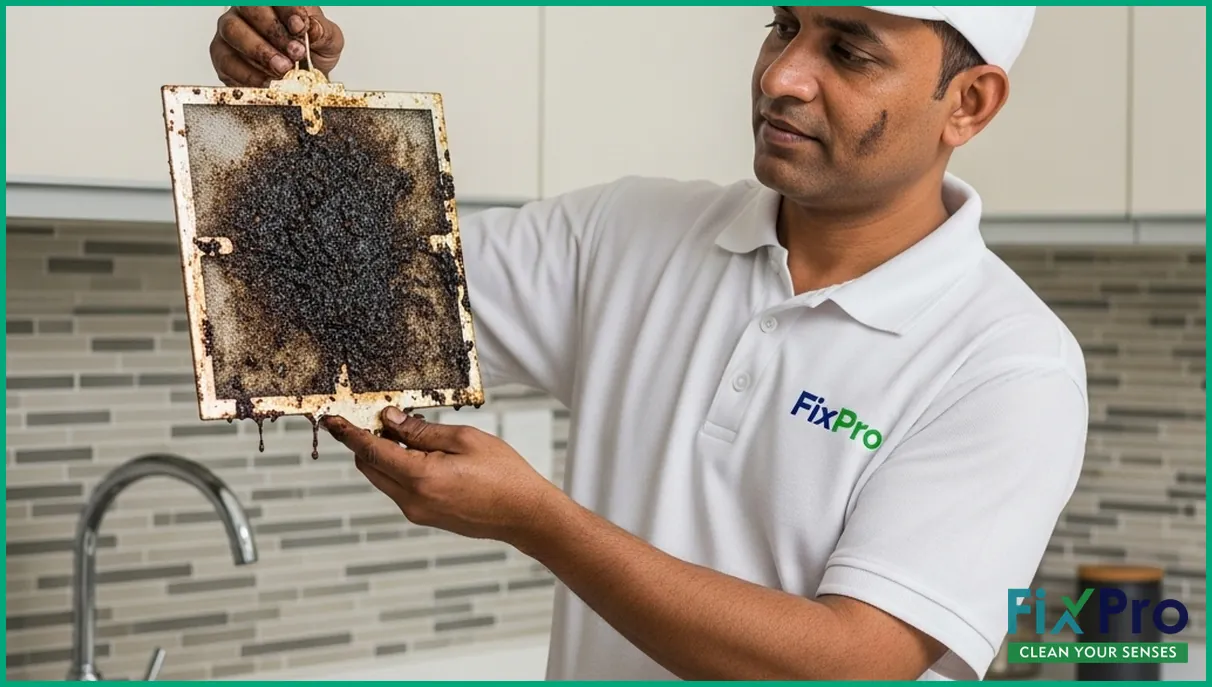
2. Remove and Clean Grease Filters
- Turn off all power to the exhaust system for safety.
- Remove filters and soak them in hot, soapy water or a degreaser solution.
- Scrub filters with a soft brush to remove stubborn grease.
- Rinse thoroughly and allow to dry before reinstalling.
- Inspect filter frames for warping or damage before reinstallation.
- For reusable metal filters, consider running them through a dishwasher if manufacturer-approved.
Some filters, especially in commercial kitchens, may require replacement if they are damaged or excessively clogged. Always check the manufacturer’s guidelines for proper cleaning frequency and techniques.
3. Clean the Hood Interior and Exterior
Wipe down all surfaces of the hood, including hard-to-reach corners and seams. Use a degreasing cleaner suitable for stainless steel or the material of your hood. Pay extra attention to the areas above cooking surfaces where grease accumulates fastest. For stubborn spots, let the cleaner sit for a few minutes before wiping. Don’t forget to clean the control panel and light covers, as these often collect fingerprints and splatters.
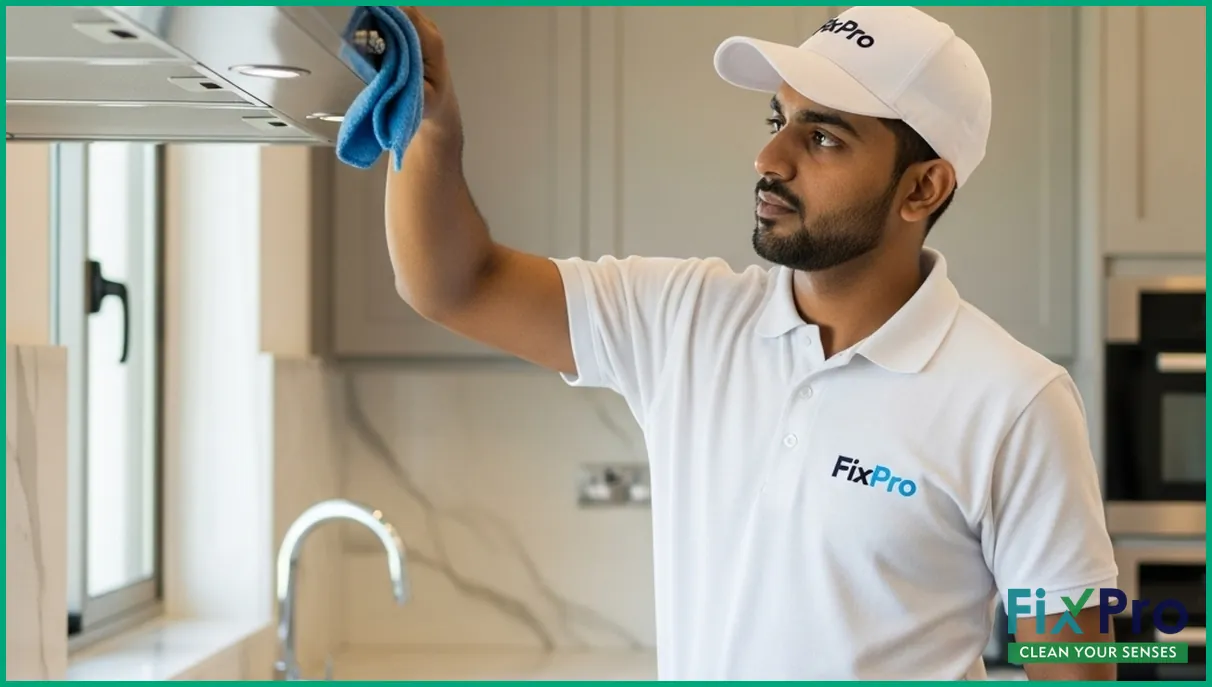
4. Deep Clean the Ductwork (If Accessible)
For homes, some ductwork may be accessible for basic cleaning. Use a long, flexible brush to remove loose debris. For commercial kitchens, or if you notice heavy buildup, consider hiring kitchen exhaust cleaning professionals to handle deep duct cleaning safely and thoroughly. Check access panels or removable sections for easier entry. If you see blackened or sticky residue, professional help is strongly advised.
5. Inspect and Clean the Fan and Motor
Turn off the power and check the fan blades for grease or dust. Wipe them down with a damp cloth and mild cleaner. If you hear unusual noises or notice reduced airflow, the motor may need professional attention. In some cases, lubricating moving parts can help reduce wear. Always ensure fan guards are securely in place after cleaning.
6. Check for Leaks, Loose Parts, or Unusual Odours
Look for signs of leaks around duct joints or the hood. Tighten any loose screws or fasteners. Note any persistent odours, which could indicate hidden grease or mould in the system. If you find water stains or rust, this may signal a ventilation or condensation issue that needs prompt repair.
7. Replace Bulbs and Test the System
Replace any burnt-out bulbs in your exhaust hood. Restore power and test the system to ensure proper operation. Listen for abnormal sounds and check for strong, consistent airflow. Test all speed settings and lighting controls to confirm full functionality.
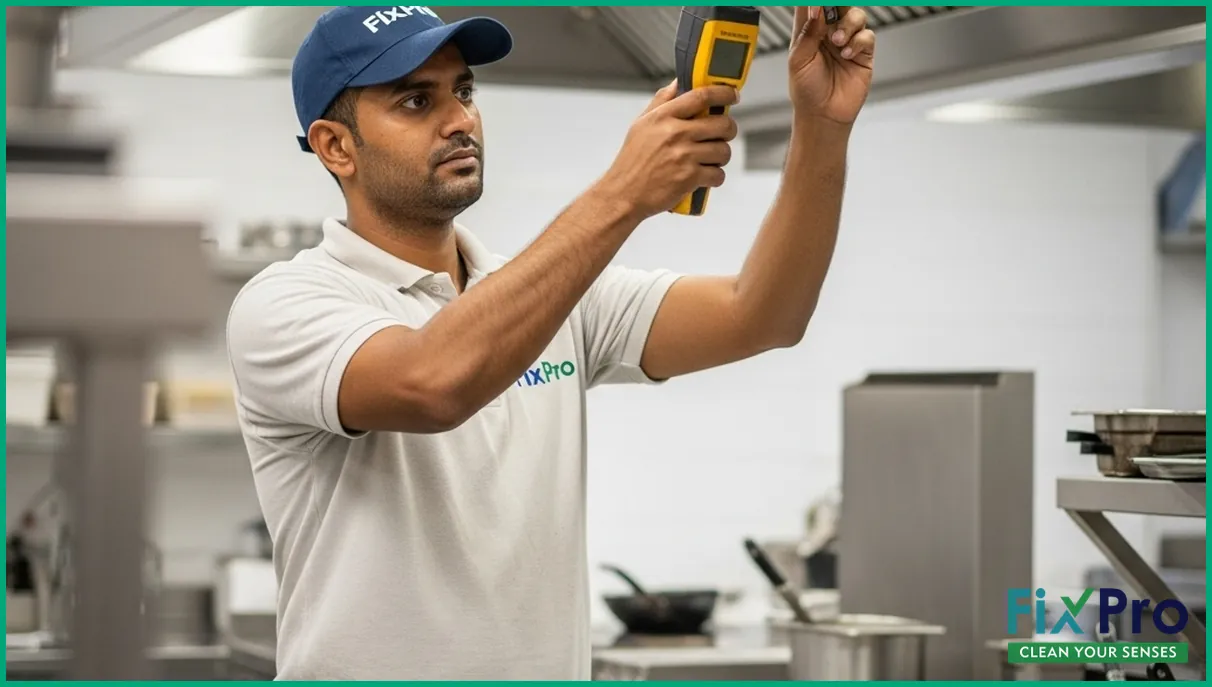
8. Document Cleaning Activities
Keep a simple log of cleaning dates, observations, and any issues found. For businesses, this record can help with compliance and future maintenance planning. Take before-and-after photos for reference, especially if you notice significant buildup or repairs needed. Digital logs or maintenance apps can make tracking easier.
Comparing DIY and Professional Kitchen Exhaust Cleaning
Some cleaning tasks, like wiping down the hood or washing filters, can be handled by homeowners or in-house staff. However, deep duct cleaning and fan maintenance often require special tools, safety precautions, and expertise. Here’s a quick comparison to help you decide which approach fits your needs:
| Task | DIY | Professional |
|---|---|---|
| Filter cleaning | Easy with basic tools | Thorough, may include replacement |
| Hood surface cleaning | Simple, routine task | Deep degreasing, hard-to-reach spots |
| Ductwork cleaning | Difficult, limited access | Special tools and expertise |
| Fan and motor service | Basic inspection only | Full cleaning, repairs if needed |
| Compliance documentation | Manual record-keeping | Professional reports provided |
| Safety risk | Higher if unfamiliar with equipment | Lower, handled by trained staff |
| Time required | Several hours for deep cleaning | Usually faster due to experience and equipment |
For example, a homeowner in Dubai attempted to clean their own ducts but missed hidden grease pockets, which a professional later removed using specialized brushes and vacuums. This ensured a safer and more thorough result.
When to Call in the Pros
If you notice heavy grease buildup, persistent odours, or reduced airflow, it’s often safer and more effective to hire a professional. Commercial kitchens in the UAE are typically required to schedule regular exhaust cleaning by qualified technicians. Homeowners may also benefit from a periodic deep clean, especially after a busy holiday season or before hosting large gatherings.
For a reliable service, look for companies with experience in kitchen hood cleaning and a track record of working with UAE kitchens. FixPro, for example, employs trained technicians familiar with local building and hygiene requirements. Always ask for references or before-and-after photos to confirm service quality.
Professional cleaning may also be necessary if you detect smoke escaping from the hood, find visible grease on walls or ceilings near the exhaust, or if your system fails a safety inspection. Scheduling regular service helps prevent costly repairs and keeps your kitchen compliant year-round.
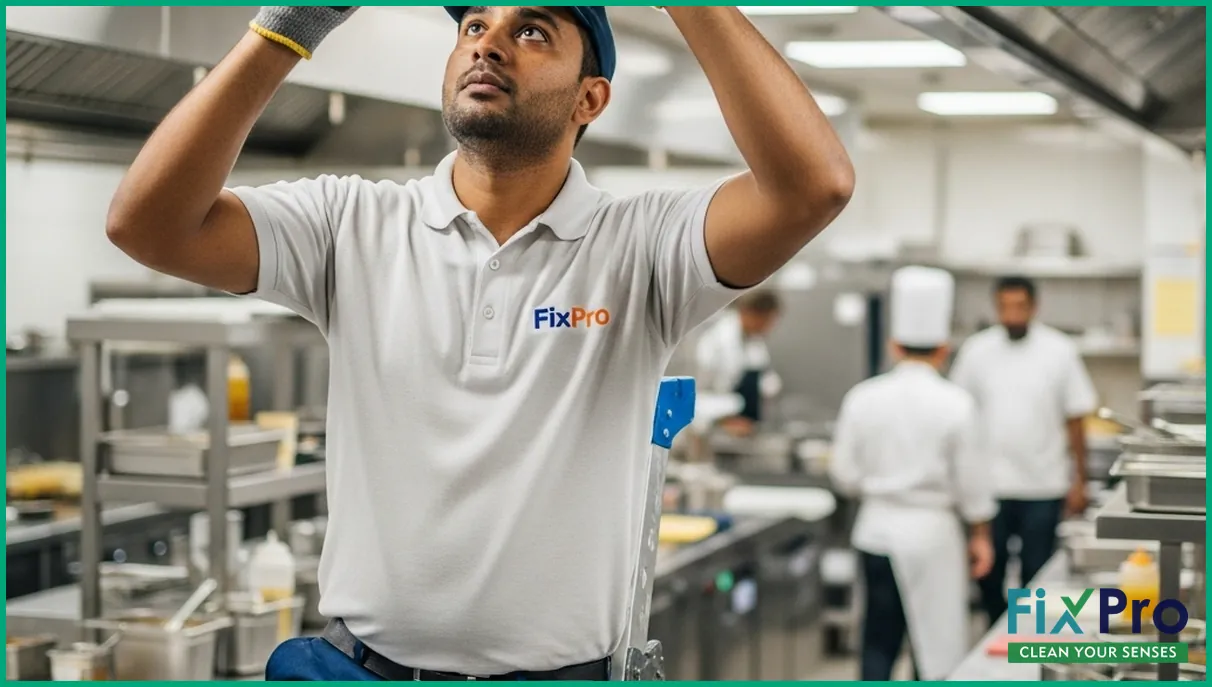
Tips for Maintaining a Cleaner Kitchen Exhaust Year-Round
- Wipe down hood surfaces weekly to prevent buildup.
- Clean or replace filters monthly, or as recommended by the manufacturer.
- Schedule professional duct cleaning at least once or twice a year, depending on usage.
- Keep a maintenance log for easy reference and compliance.
- Consider an AMC contract for regular, scheduled maintenance.
- Check for and promptly clean up any grease drips or splatters after heavy cooking.
- Educate staff or family members on best practices for daily and weekly cleaning routines.
For example, setting a monthly reminder to check and clean filters can prevent last-minute rushes before inspections or events. Using the right cleaning products for your hood’s material also helps maintain its appearance and function.
Related Services for a Safer, Healthier Kitchen
Kitchen exhaust cleaning is just one part of maintaining a safe and efficient kitchen. Other valuable services include duct cleaning for your AC system, HVAC maintenance to ensure good air quality, and comprehensive MEP services for plumbing and electrical safety. Each of these services helps keep your kitchen and wider space running smoothly.
For instance, combining kitchen exhaust cleaning with AC duct cleaning can significantly reduce dust and allergens, creating a healthier indoor environment. Regular MEP checks also help prevent electrical or plumbing issues that could disrupt kitchen operations.
FAQ
How often should I clean my kitchen exhaust system?
Most UAE homes clean filters monthly and schedule deep cleaning once or twice a year. High-use kitchens may need more frequent service. Keeping a cleaning log helps track maintenance needs.
Can I clean the exhaust ducts myself?
Basic duct cleaning is possible if accessible, but deep cleaning usually needs professionals with proper tools. Attempting DIY for hard-to-reach ducts can risk damage or incomplete cleaning.
What are signs my exhaust system needs urgent cleaning?
Watch for strong odours, visible grease, weak airflow, or loud fan noises. These signs mean your system could be clogged or unsafe, and immediate attention is needed for safety.
Is professional cleaning required for businesses in the UAE?
Most commercial kitchens are expected to use professional services to meet hygiene and safety guidelines. Keeping records of these cleanings can help with inspections and compliance checks.
What should I expect from a professional cleaning report?
You’ll usually get a summary of work done, before-and-after photos, and notes on any issues found. This documentation is helpful for future planning and meeting health requirements.
Does kitchen exhaust cleaning help with allergies or odours?
Yes, removing grease and dust improves air quality and reduces lingering smells. Clean systems can also lower the risk of mould growth, making your kitchen more comfortable for everyone.
Methodology & Limitations
This checklist is based on practical experience from UAE kitchens, manufacturer guidelines, and common industry practices. Tips are drawn from routine maintenance tasks and professional recommendations. However, every kitchen setup is unique. Always follow your equipment’s manual and consult qualified technicians for complex issues. This guide does not replace official safety or hygiene standards required by UAE authorities.
Examples and comparisons are intended to illustrate typical scenarios found in UAE homes and businesses. Actual cleaning needs may vary based on cooking habits, kitchen design, and equipment age. When in doubt, seek advice from a certified technician to ensure compliance and safety.
Ready to tackle your year-end kitchen exhaust cleaning? Start with the checklist above, and if you need expert help for deep duct or fan cleaning, consider scheduling a service with a trusted provider. For more details on related maintenance, explore our AC cleaning Abu Dhabi options.
